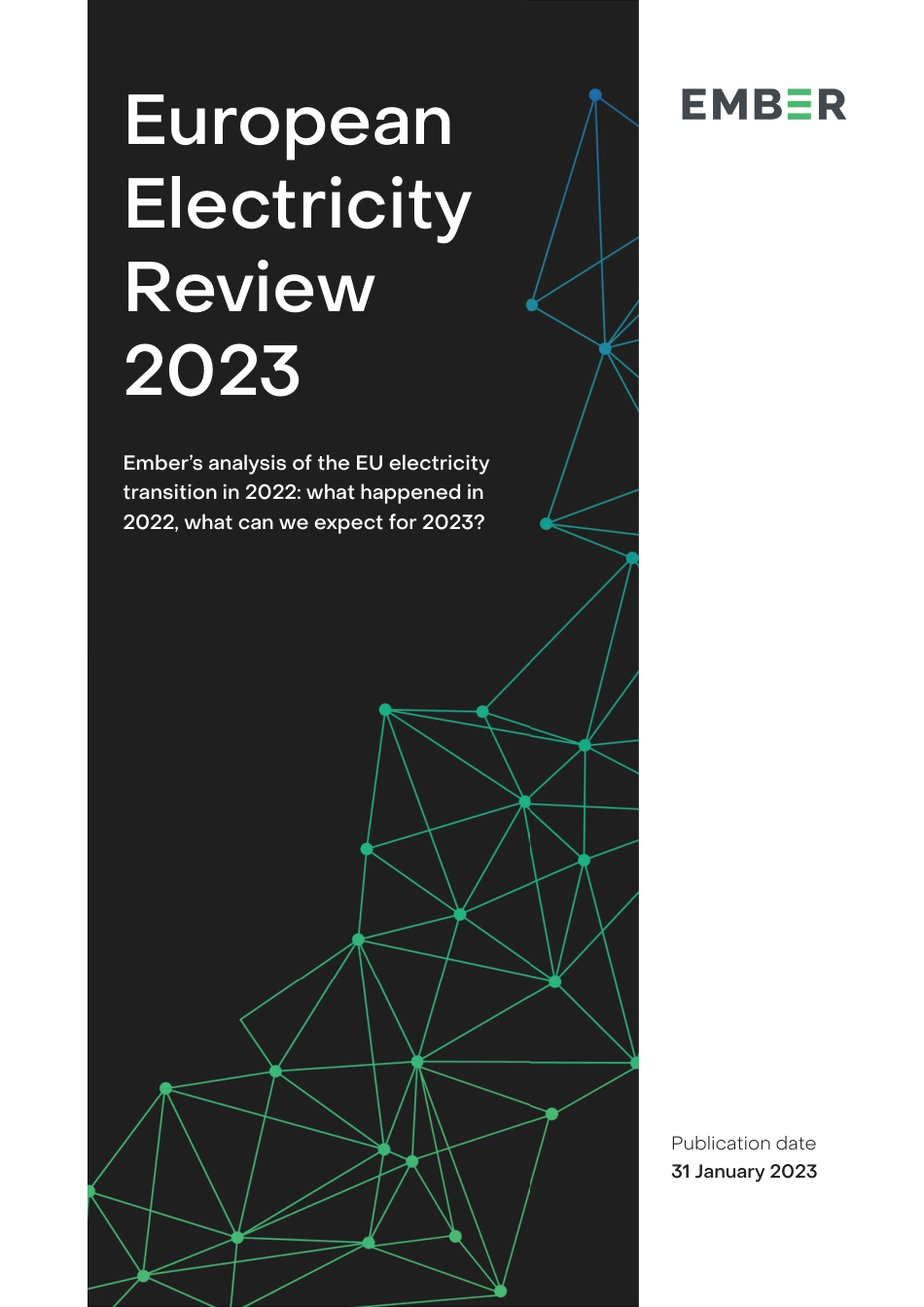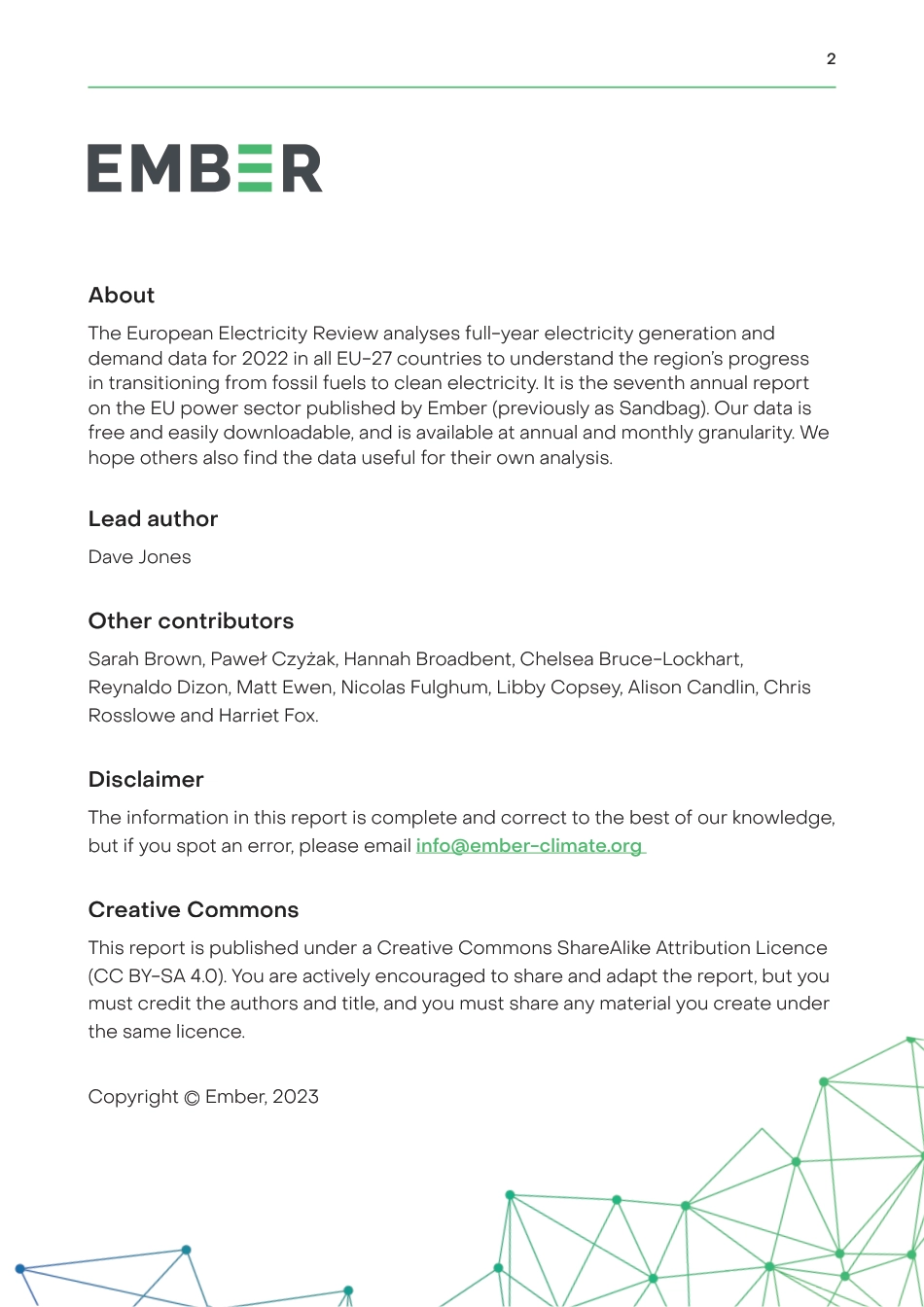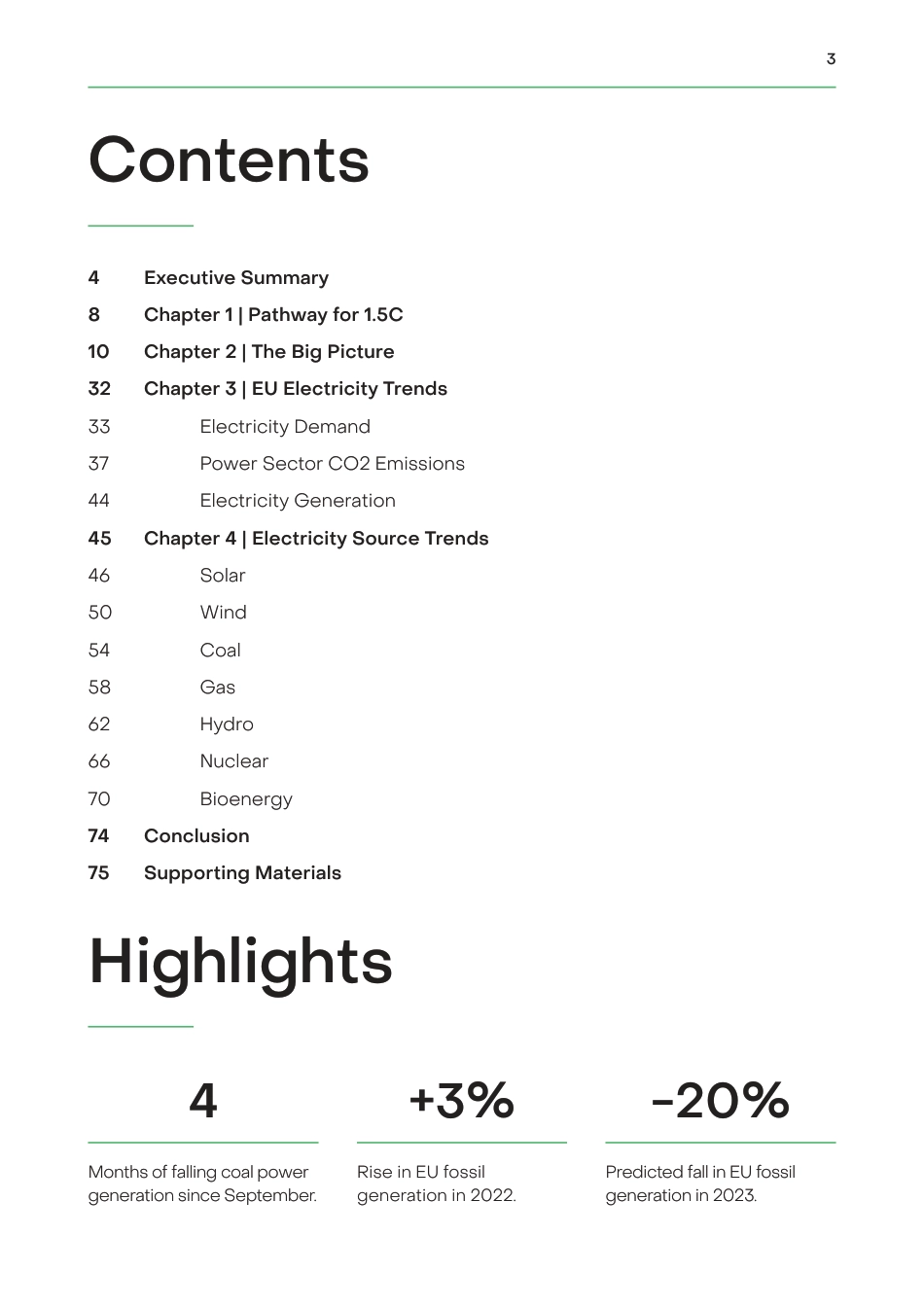European Electricity Review 2023Ember’s analysis of the EU electricity transition in 2022: what happened in 2022, what can we expect for 2023?Publication date 31 January 2023AboutThe European Electricity Review analyses full-year electricity generation and demand data for 2022 in all EU-27 countries to understand the region’s progress in transitioning from fossil fuels to clean electricity. It is the seventh annual report on the EU power sector published by Ember (previously as Sandbag). Our data is free and easily downloadable, and is available at annual and monthly granularity. We hope others also find the data useful for their own analysis.Lead authorDave JonesOther contributorsSarah Brown, Paweł Czyżak, Hannah Broadbent, Chelsea Bruce-Lockhart, Reynaldo Dizon, Matt Ewen, Nicolas Fulghum, Libby Copsey, Alison Candlin, Chris Rosslowe and Harriet Fox. Disclaimer The information in this report is complete and correct to the best of our knowledge, but if you spot an error, please email info@ember-climate.org Creative CommonsThis report is published under a Creative Commons ShareAlike Attribution Licence (CC BY-SA 4.0). You are actively encouraged to share and adapt the report, but you must credit the authors and title, and you must share any material you create under the same licence. Copyright © Ember, 2023Creative CommonsThis report is published under a Creative Commons ShareAlike Attribution Licence (CC BY-SA 4.0). You are actively encouraged to share and adapt the report, but you must credit the authors and title, and you must share any material you create under the same licence. Copyright © Ember, 20232Contents4 Executive Summary8 Chapter 1 | Pathway for 1.5C10 Chapter 2 | The Big Picture32 Chapter...



